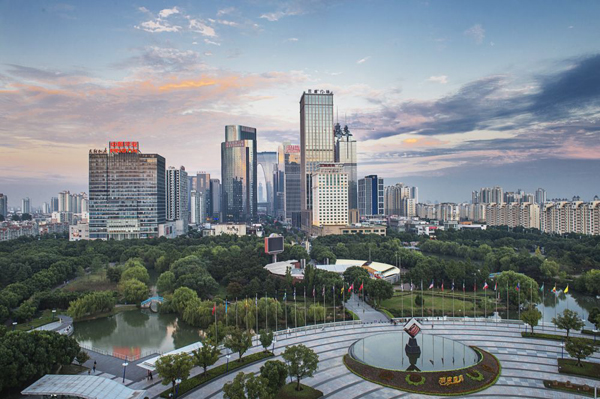
Suzhou New District in Suzhou, Jiangsu province [Photo provided to english.snd.gov.cn]
The economic aggregate of Suzhou, Jiangsu province exceeded 2 trillion yuan ($309.6 billion) during the 13th Five-Year Plan period (2016-20), realizing an average annual growth rate of 6.1 percent, according to the government work report released on Jan 19.
Benefiting from the rich natural resources and friendly cultural environment, Suzhou's economy grew from 438 million yuan in 1952 to 10 billion yuan in 1986, and then to 100 billion yuan in 1996, to 1 trillion yuan in 2011, and finally to 2 trillion yuan in 2020.
It has also made progress in urban-rural construction, preserving the environment, increasing living standards, and improving social governance.
The report said that the urbanization rate of permanent residents in Suzhou reached 78 percent in 2020, while the per capita disposable incomes of urban and rural residents were 71,000 yuan and 37,400 yuan, growing 7.1 percent and 7.9 percent, respectively.
Suzhou also saw an increase of 17.5 percent in the proportion of days with good air quality and a drop of 43 percent in the average concentration of PM2.5-particular matter with a diameter of less than 2.5 micrometers.
The city has planted 21,267 hectares of forests and cleaned 885 rivers. It is also among the first ecological civilization demonstration cities in China.
In addition, Suzhou has managed to bring the COVID-19 epidemic under control, resulting in strong economic gains.
It became the fourth city in China to earn 230.3 billion yuan in general public budget revenue. Investment in fixed assets saw year-on-year growth of 6.6 percent to 522.4 billion yuan, while the total value of imports and exports rose 1 percent to $322.35 billion, and foreign capital in actual use reached $5.54 billion.